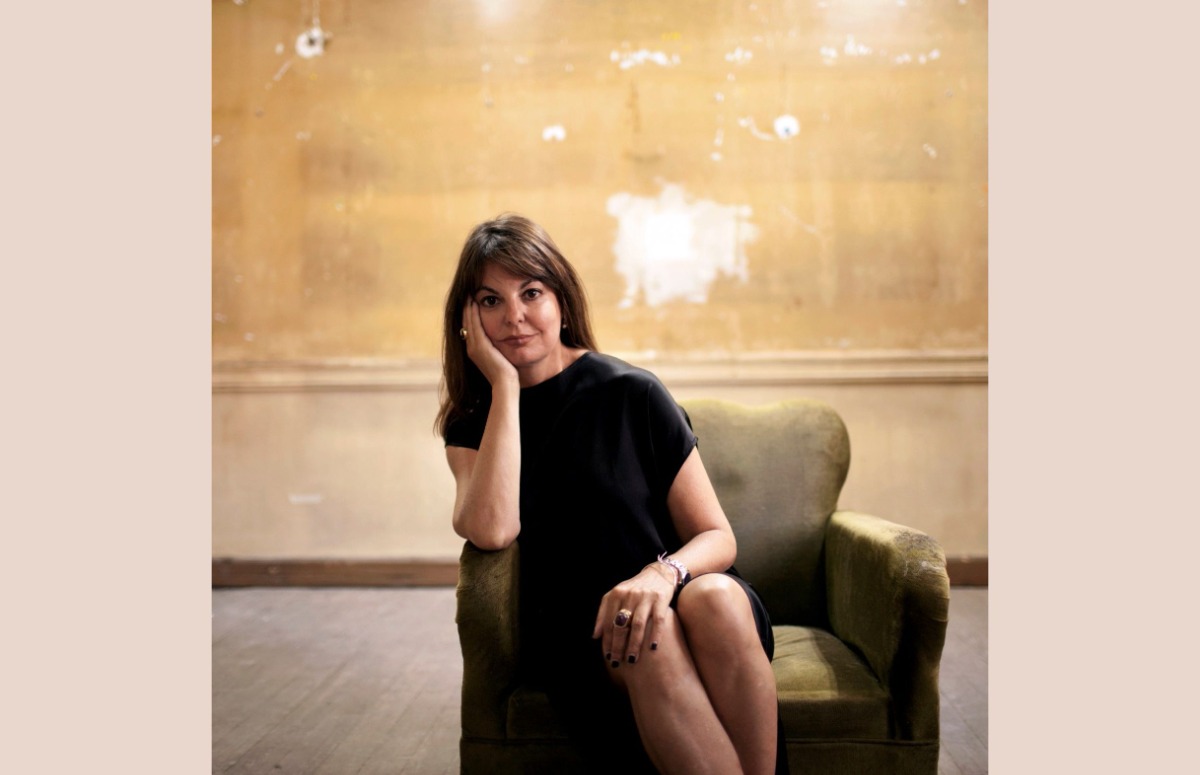
Art fairs are increasingly striving to be intellectual exchange events
An interview with Marina Fokidis, a writer and art educator based in Athens, co-curator of SPARK art fair 2024
The SPARK art fair will take place at Vienna’s MARX HALLE from March 14 to 17, 2024, bringing together artists from over 20 countries spanning four continents: Europe, Africa, North and South America. In line with the unique SPARK concept, only solo presentations will be exhibited. This format puts the artists’ work at the center stage, making the SPARK art fair a truly unique event.
The motto of this year’s SPARK edition is “The City in Dialogue”, and its Curatorial & Advisory Board includes both national and international experts. The artistic direction of SPARK Art Fair 2024 is led by the curators Walter Seidl and Jan Gustav Fiedler, together with international curators Marina Fokidis from Athens and Zurich curator Christoph Doswald. Numerous artists are taking the opportunity to make an artistic statement with works produced especially for SPARK.
Shortly before the art fair, we spoke with curator and writer Marina Fokidis. She founded the art center Kunsthalle Athena (2010–2015) and the journal South as a State of Mind. Fokidis was a member of the core team of documenta 14, co-curator of the 3rd Thessaloniki Biennale, and curator of the Greek Pavilion for the 51st Biennale di Venezia. As an independent curator, she has curated several international exhibitions, including the most recent one entitled “The Mediterranean: A Round Sea”, which was the central thematic exhibition of Arco Madrid 2023.
Curatorial & Advisory Board © aeliaandthecamera 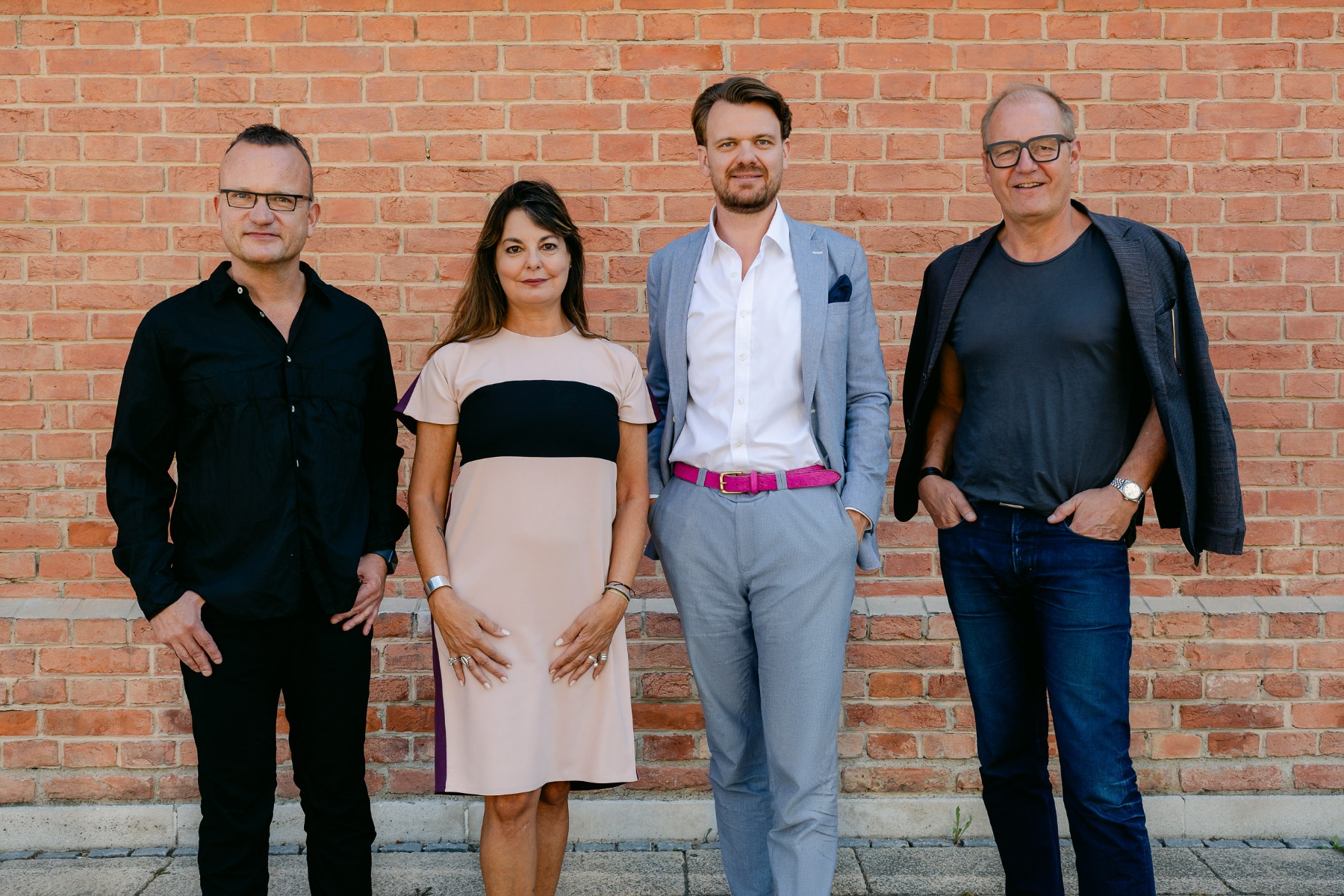
How would you describe the concept of the SPARK Art Fair 2024? I find the motto of the fair, “The City in dialogue”, very interesting because you, along with other curatorial team members, are engaged in dialogue while working on an artistic concept yourselves. Therefore, I would like to ask you about the various aspects of this dialogue – the conversation with your colleagues and the interaction with the city where the fair is taking place.
When you organize a fair rather than exhibiting art in a museum, the theme tends to be more broad. It’s not quite the same, you know? However, our proposition, our intuition, what we aim to do, is to somehow engage the city, any city, not necessarily Vienna, in dialogue. So, what does it mean to be in a city? In my career, typically in my pursuit – because I founded the magazine “South as a State of Mind” or was part of the core team in documenta 14, which spanned two countries – we always had this motto in mind: that you see the rest of the world from the particular place you are standing and you make part of the international wherever you are. And you are always international. Everything is international, but from your own perspective, from where you stand. This means that right now, I’m in Greece, and I perceive the world a bit differently than when I’m in Vienna or Brazil. But it’s always the same international world. In Brazil, for instance, São Paulo, Vienna in Austria, and Athens in Greece are equally significant in shaping this international world. Even if I were in a village, I would view the city from that village. If I’m in one district in Vienna, I see the world from that district. And if I’m in another district, I see the world from that district, because there is multiplicity in different existences everywhere. I mean, there are plenty of subjectivities. So, the idea was to present this proposition and find a way to curate an international fair that also makes sense in its local context. Another idea we often discussed while I was visiting Vienna was that Vienna itself is an international city, much like Athens has become. Its art scene is also very international. There are many people from different nationalities who live in Vienna and produce art there. It’s like a cluster.
Additionally, what has always fascinated me about Vienna, something that doesn’t happen in Greece and has always impressed me, is the city’s expansion, which is circular. It took me a while to understand how this works, but once I did, it completely resonated with my understanding of time, place, and subjectivities. I really like this concept of involving not linearly, but rather in a series of consecutive circles. So, that was the whole idea: to propose this, even though, at the end of the day, because it is an art fair and people have to pay to participate, there is still a market aspect to it. We wanted every visitor who walks into the fair to remember that there might be galleries from Brazil or elsewhere, but we’re experiencing the one in Vienna. For example, we invited a gallery from Italy featuring the work of the French artist Charlotte Perriand, who created work in the Alps. That, to me, exemplifies an international perspective—viewing from the place you’re speaking from. I was very honored to be invited by my colleagues Walter Steidl (Artistic Director) and Jan Gustav Fiedler (Artistic Director) to be part of this dialogue we began a year ago, and I think it has been extremely fruitful. We decided to work together in all capacities this time, meaning there isn’t a curatorial cluster and then the rest; instead, we reviewed all the proposals together. We invited artists, staying true to our mission, starting from the artists themselves.
George Lappas, Happy Figure, 2010, Metal, plastic cloth and electric bulbs, 155 x 150 x 32cm, Courtesy of CITRONNE Gallery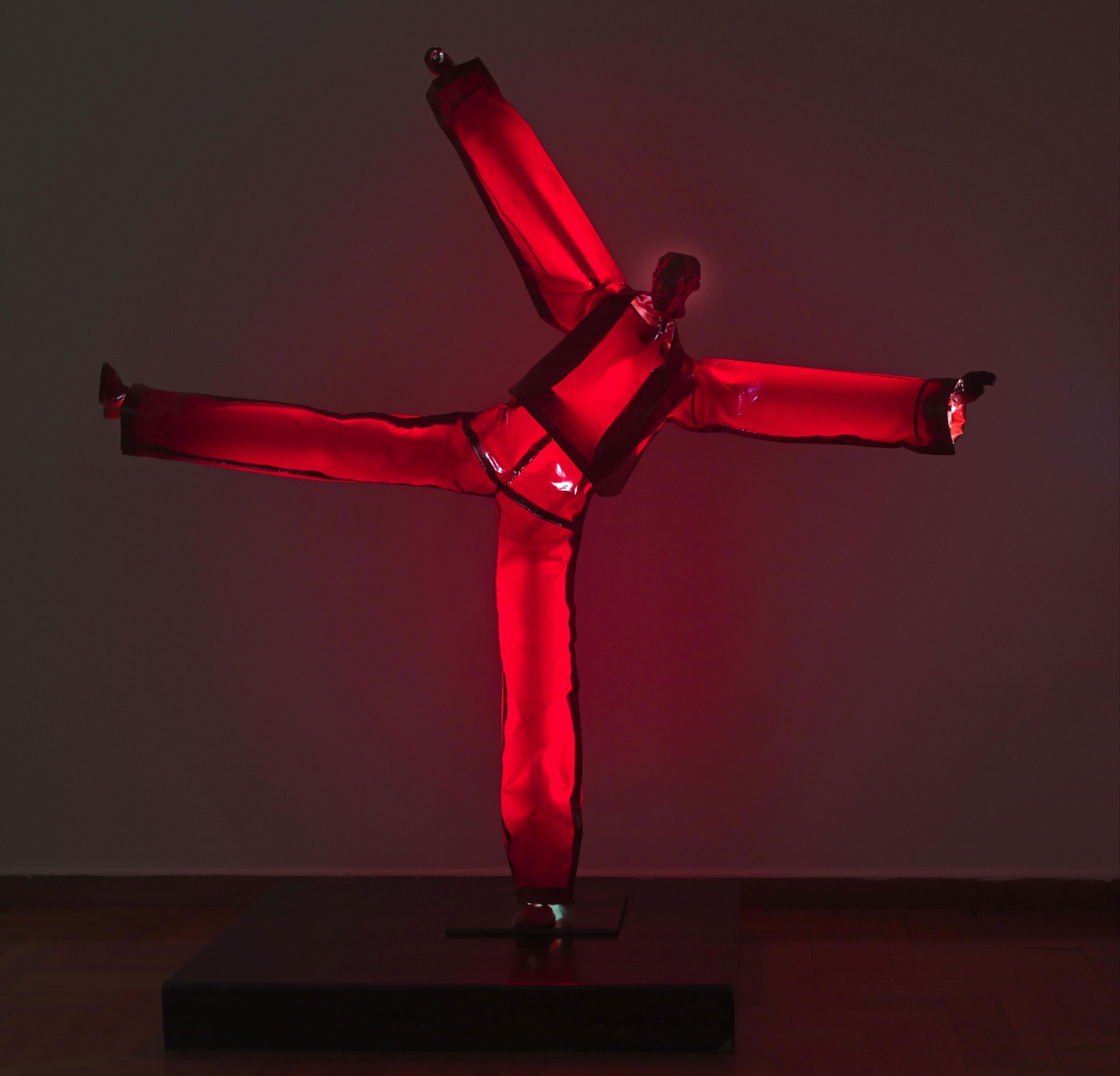
This is what makes SPARK Art Fair unique: it’s the only art fair that exclusively features solo artist presentations. What do you think are the main challenges and advantages of this concept?
I think it’s a beautiful concept, and I was very glad to join in. What happened in the previous editions was that the curators worked on a particular part of SPARK. This year, we decided to work all together on all parts. So the positioning of the fair didn’t happen manually or authoritatively, but it happened through curatorial proximities. That was something that was also very challenging for me and for all of us – to somehow forget other dynamics and go through some curatorial proximities that would bring works from different parts of the world together, as if they were not booths.
So I think the unique idea of SPARK that pre-existed, of course, I’m here to join, is the solo shows. Also, something else that makes me proud to work in SPARK is that the booths have the same size. That’s really amazing, and everybody pays the same amount to be part of it. So no matter how big or small a gallery you are, there is no distinction. And I think this is amazing. It’s a fair that dares to go a little bit against the currents of territoriality. You know, even in the Venice Biennale, the Greek pavilion is there, the American Pavilion is there... obviously, whoever pays more and can sustain... In contrast, SPARK is a very curated unique fair that was invented by its founder to break this barrier. And I think this is amazing if we really grasp it.
Of course, it’s a challenge, because the galleries that are taking part have one opportunity by representing that one artist. And that comes up very often in the discussion. Imagine a gallery, especially, that is bringing their work from somewhere far away and doesn’t manage to sell this work. But I think that’s also a mental situation because, in the end, a gallery gets introduced to a certain kind of crowd. And we know that nowadays people buy also from the internet or whatever. Of course, it’s extremely important to sell at an art fair, but I think that the main aim of the art fair is not the sales in the end.
For example, people get informed at art fairs in a way that they wouldn’t otherwise; they make contacts, people sell even things that are not in the fair per se. It’s not anymore that we’re buying only in person. So in that way, I think that a strong curatorial approach, a very good program of talks, a very good program of films or other things can engage everyone, even if we say in the older terms of the fairs, “Oh, people don’t care”. Well, they do care. I can tell you from a previous experience at the ARCO art fair, where I curated the central exhibition last year, and it was on the Mediterranean. I think two artists from there, it’s not that they were unknown, but the art fair was somehow a reminder of their positions and they are now selected for the Venice Biennale.
So in that way, I think, if somebody goes and says, “Yeah, but what does it mean in economic terms, in terms of sales?” Well, it means the gallery is very happy to see its artist’s work in the Venice Biennale. It means something in economic terms as well.
SPARK Art Fair Vienna 2022 © Simon Veres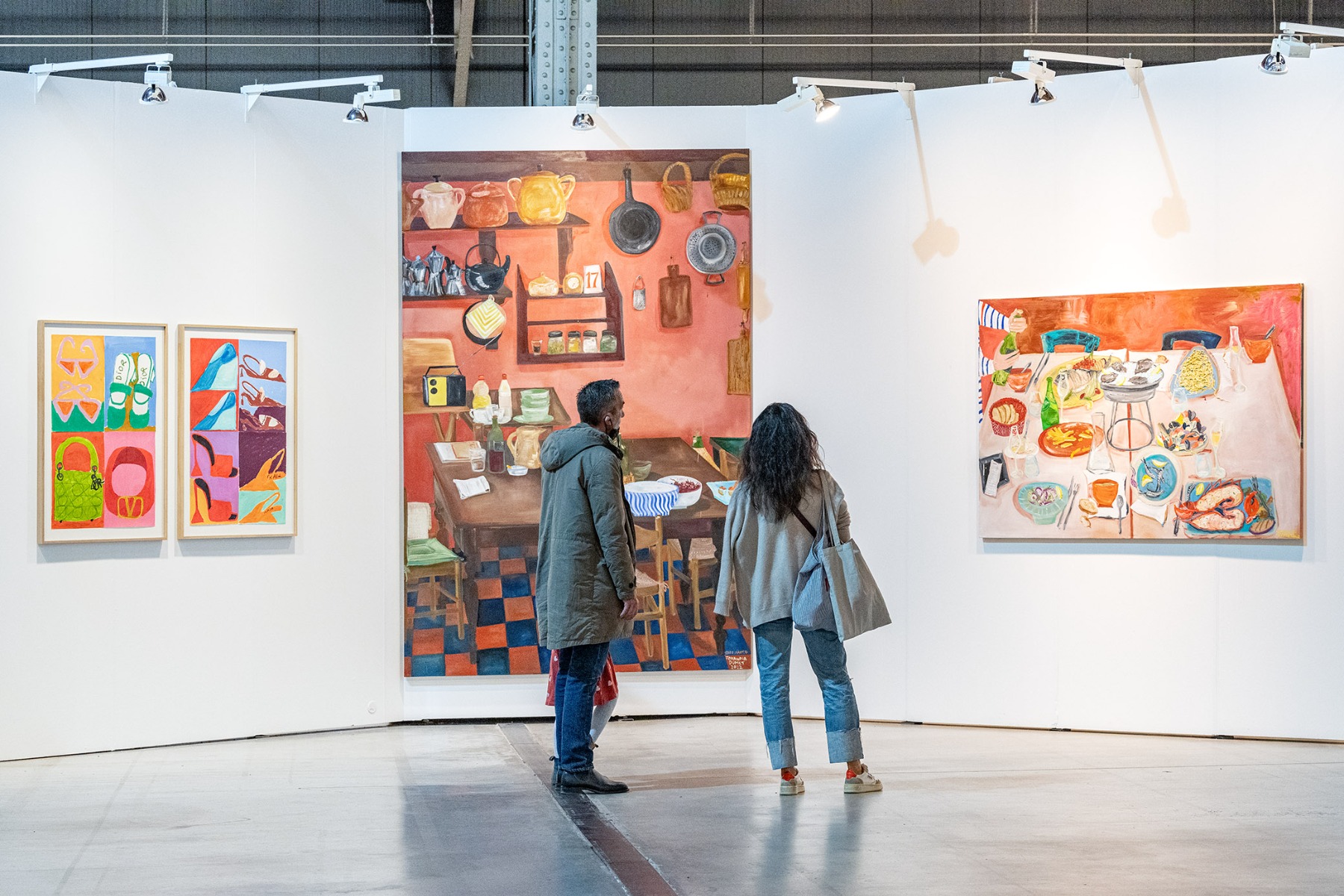
Could you elaborate a bit on the artist selection process? Do galleries propose the artists, or is it the curatorial team who invites them?
The main idea was that we would invite the artists, but, of course, there is quasi – there are invitations to artists, and there is discussion with galleries as well about the artists. And there are also proposals, and some of them we accepted. There are over 80 galleries, but we really discussed every single position.
I also find it very interesting that SPARK Art Fair somehow broadens its scope by establishing collaborations with the most significant Viennese museums and art institutions; it somehow extends beyond the confines of just an art fair.
It’s also something new, and it’s being done by the local team, especially by the team led by Mia Legenstein, Head of International Relations. I think it was an amazing idea to open up collaborations with institutions, and it’s something that happens in every city where there is a fair. I believe that this always goes hand in hand because, in the end, the art market and the institutions are interdependent.
There will be two talks that I will be moderating at the fair. One will focus on biennials, and the other will discuss public institutions and their healthy relationships with the art market. We’ll have important directors from other institutions participating, such as the Macro museum in Rome and the Tapias Foundation in Madrid, among others.
Of course, the fair isn’t primarily about attending talks, but there is an audience for them. Another idea behind these talks is to stimulate thought, not only among guests who come just to see the fair, but also among directors of museums, biennales, and other art institutions. I also think it’s a good idea to bring international museum directors and biennial curators to Vienna. Because, you know, one thing is the art fair, but another is that these people are not necessarily only looking to buy; they’re also seeking out artists and new collaborations.
SPARK Art Fair Vienna 2022 © Simon Veres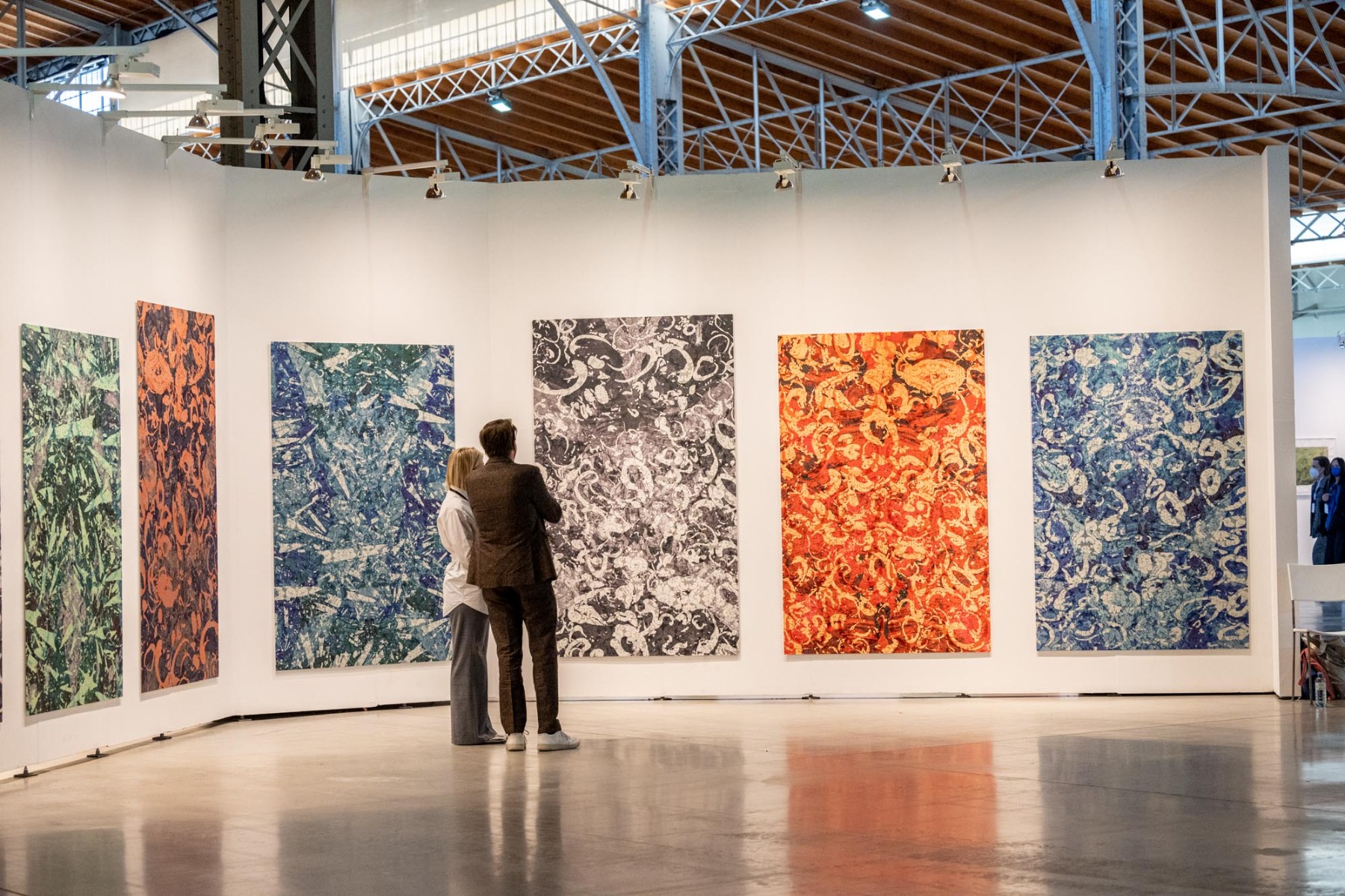
If I understand correctly, some of the works are created specifically for SPARK Art Fair, rather than being existing pieces.
There are indeed some works that are specially made for SPARK Art Fair, and this is truly amazing. Of course, this comes at the expense not of the fair, but of the gallery and the artist. So I hope that collectors will support this effort. Yes, this is quite important. But for me, the most significant aspect is the coexistence that occurs at the fair. It’s not an art fair where you’re shielded from your neighbor or engaged in a sort of nasty antagonism. Instead, it’s an art fair where each gallery contributes a part to the whole, with individual positions and those we wished to include.
As we can read in a SPARK Art Fair press release, there will be “a high female representation, which is around 70 per cent.” Was this a conscious decision?
Last year at ARCO, when I curated the show, there were only two men out of 20 positions, one living and one deceased. When people asked me how this happened, my question back to them was, there has always been 70 or 80% men, but we never asked why. So I want to repeat this as an answer. It’s not directed at you, it’s a general observation. Why do we pay attention to the 70% of women now, when for many years it was 80 or 90% men and we never questioned it? So there is a kind of correction happening here.
So the answer is: it probably is conscious, but let’s also consider why this is now an issue.
Marx Halle © HEY-U 
During the pandemic, there were extensive discussions about how the art world would change afterward. There were speculations that perhaps there would be fewer art fairs, less traveling, and that the art world would start to think more about sustainability, among other things. Then the first post-COVID Venice Biennale came, and it was the first international event of such scale. There was a feeling that nothing had changed in the world, the same champagne, and everything.
Now, we are living in even more challenging times, with a war in Europe (quite close also to Vienna) and the situation becoming increasingly complicated. How do you feel about the role of art in times like these? Does it have to play any role?
As you mentioned, the pandemic certainly felt like the end of the world for many of us. But in the end, it was just an epidemic, and our main concern was about our lives. I’m a little surprised by the expectations when people say that everything continued as usual in Venice, because one thing that never stopped during the pandemic was production. Even at the expense of very vulnerable individuals. I recall certain countries that grow white asparagus bringing in workers from other countries to cultivate the crop. Asparagus is a delicacy, not a necessity during a pandemic. Many of these seasonal workers ended up contracting COVID-19, but they were not treated in the countries that consumed the white asparagus; instead, they were treated back home where medical resources were scarce. I remember movements calling for a halt to production. If production had indeed stopped, perhaps things would have been different. Maybe difficult, but different. However, work never ceased; production workers continued working around the clock. That’s all we know. We protected ourselves in every other way. I don’t believe that certain subjectivities became poorer during the pandemic.
While the spectacle suffered greatly, somehow it managed, and apparently, the art market was thriving. People began buying from far away. I think the pandemic served more as an exercise in how we can adhere to centralized directives rather than having a significant impact on economic transactions. It also highlighted our care for one another and our reluctance to endanger each other’s health.
Now, the situation with war is different. It’s extremely serious. It’s not just the war you mentioned, where Vienna and the Baltics are close. There are other conflicts as well, where Greece is close. I mean, kilometer wise, and they’re all connected. There is things happening in Russia, that affects all of us. These conflicts have far-reaching implications, and there is a sense of turbulence right now. Some people may bear the cost more than others, and this may be related to both economic factors and profit-making motives. And maybe it’s all connected.
So, I think it’s very tough to compare the art world and what we know with situations like this, because art will never be enough to solve such complex issues. You know, art can never cure; it can only maybe provide some solace or insight for later reflection. Also, art sometimes offers judgments on these matters, which is very valuable, but it doesn’t necessarily address the structural issues, because many people are involved in those structures. This is something that I often struggle with as a curator. I don’t know where to draw the line; there always seems to be a line, and then a conflict arises, followed by another conflict. It’s very complicated. I believe we should remain extremely aware of what’s happening around us, including different positions, even conflicting ones, in art shows or art fairs, and try to record the situation in the poetic manner that art does.
The market is necessary, not only for its speculative aspect, which is obvious, but also for the sustainability of artists and art professionals. What I really appreciate seeing happening is that many art fairs, along with their primary goal of helping galleries sell artwork, are also focusing on curated content. They are striving to make sense and become part of the conceptual exchange within the art world. This is achieved through curated shows, special features, and creating a gathering space. One of the interesting aspects of art fairs is that they bring together many different constellations of people. The art fair primarily belongs to the galleries and the artists, so if there are 80 galleries and 80 artists, there are already 160 people collaborating on an equal level, because if the gallery doesn’t come or pay, there would be no art fair.
There is a very particular collaboration and fine-tuning happening in these spaces, and I love this aspect.
We Were All Naked (Red Elephant Ear), 2023, Julius von Bismarck, Archival pigment print on Hahnemühle Photo Rag, Baryta, 147 x 220 cm, Edition of 4 + 2 A.P., Courtesy of Julius von Bismarck and alexander levy
And in the end, it’s not only about the economics, but also about the message that the artwork carries and spreads to its visitors. I think this is really important because it’s also an intellectual event.
I mean, art fairs are increasingly striving to be intellectual exchange events, gatherings, and celebrations, rather than just markets. You know, I come from the south of Europe, and in Greece, as well as in other parts of the Mediterranean, the market has always been a meeting space where culture thrives, even at the fruit market. The market, the souk, the bazaar – these are places where important conversations take place. As we know, the Greek Agora was a vegetable market and is where democracy was first imagined.
Similarly, in Vienna, for example, whenever I am with a friend or an artist, we always meet at the central market. It’s always bustling with people engaged in healthy antagonism but also collaborating with each other.
Franz West / KONZETT. Courtesy of Franz West and KONZETT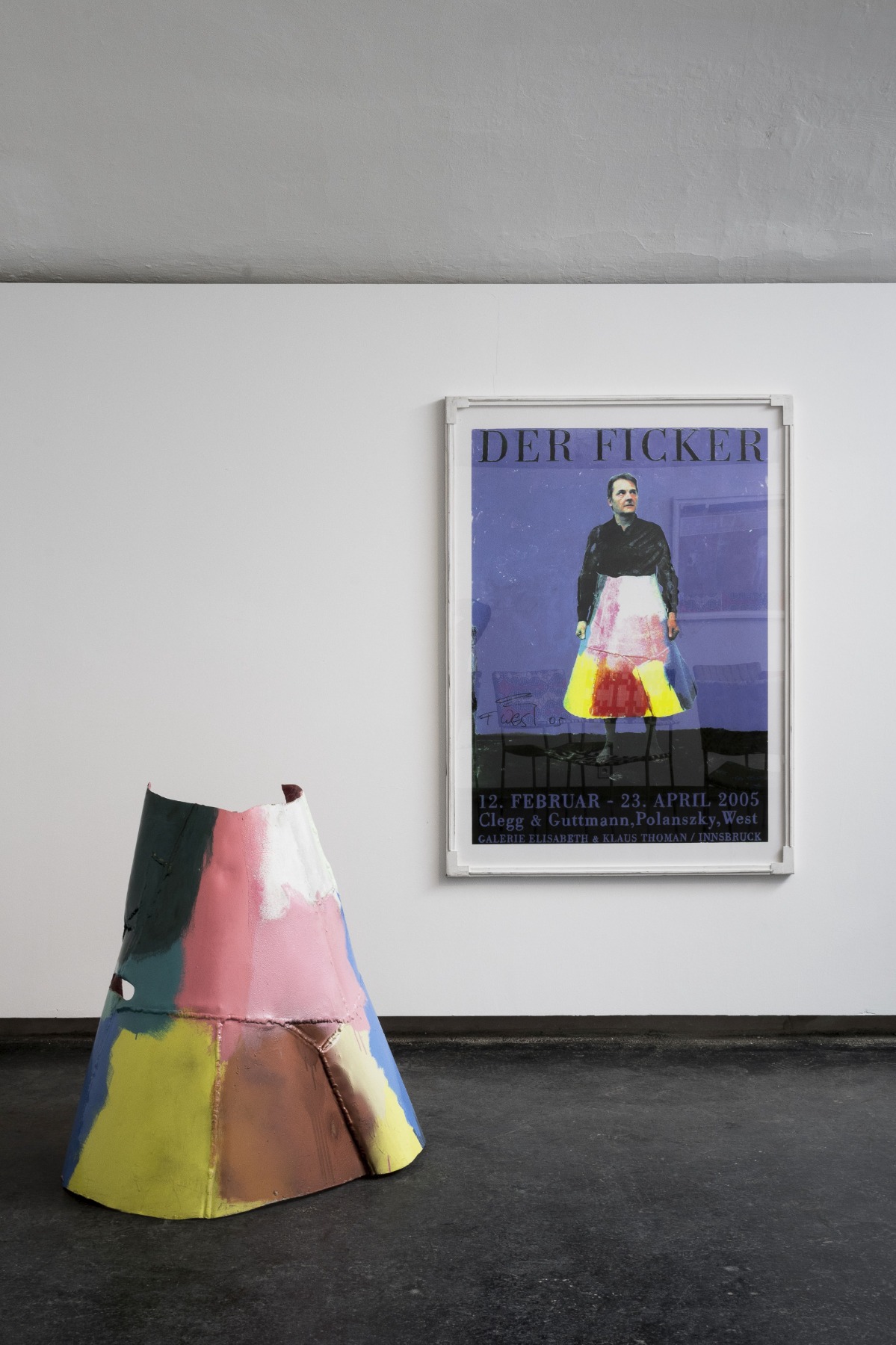
I know that it is a difficult question for you as a curator, but perhaps you can mention some personal artistic surprises that emerged during the process of working on this exhibition for SPARK art fair, not necessarily highlights.
It’s difficult, so I will not mention specific names. As someone who isn’t deeply involved in the AI world and digital works, I encountered some truly amazing proposals. Another noteworthy aspect was the participation of galleries from around the world, spanning from Brazil to Vienna. A significant highlight was also the SPARK team; working with such a dynamic and positive team led to the great results.
You mentioned AI works. How do you, as a curator, think they have found their own niche and are going to stay?
I come from an older generation; AI is not in my blood. However, digital works are in my blood. I worked very closely with people like Miltos Manetas or Andreas Angelidakis, who has created the “Neen World”, which were among the first digital works to gain international recognition. So, I understand the computer as a means of working.
I think if one takes AI as a tool to collaborate with, and not as something that is pure innovation, it’s similar to when video appeared. I had a bit of an adversarial relationship with AI; it felt a little too invasive for me. But then I saw people using it for artistic purposes, which is very interesting. Now, I’ve seen extremely interesting AI works, also here at the fair. Let’s not forget, Vienna is also the second home of the amazing digital artist John Gerrard. He’s somebody who uses the media in an amazing way. And he keeps learning.
The problem, for example, sometimes arises when I teach curating in different universities around the world. I ask students to write something, and in two minutes, everybody has written a text. I say, ‘No, you need at least half an hour to write this paragraph,’ and then I realize, of course, that it’s not written by the students. There’s no trouble with that, but then I explain to them, ‘Look, I found a list of 10 words, and I said, “These are words that will appear in every one of your texts. Do you want it to be like that?’ I mean, they’re all from art schools, they all dressed individually and have their characters, and I say, ‘Look, writing is the same; you write, and I can tell you which 10 words will be in all of your texts because that’s how AI works.’ So, I think eventually it will work for medicine or science, but when we’re speaking about the creative world, I think people will slowly figure it out.
I think, as with all art and culture, there is a difference between the first NFTs that appeared from artists who were not artists, and were merely creating monkeys, and this became a transaction in the crypto world. I think this trend is already dead, and people lost a lot of money with this. The artists involved will never leave a mark in history; I don’t even remember their names, you know.
SPARK Art Fair Vienna 2022 © Simon Veres
In these days, SPARK will be a platform where young collectors will also meet. What is your feeling – does the approach to art and collecting change due to the context of the times and the diverse backgrounds of the younger generation, or is the instinct (gene) for collecting so strong that it still generates the same passion?
I think it’s as you say, people have a kind of gene or passion, and they take it seriously. Many young collectors educate themselves and are quite knowledgeable. I also believe that collecting has become more approachable. So while we may see fewer philanthropists, they still exist. Collecting will undoubtedly continue. Young collectors understand how crucial they are to the arts, to the artists, and to their peers. I believe we will see amazing collections emerge, perhaps focusing on subjects more synchronized with today’s world. For instance, we might see collections dedicated to queer art. While some collectors already have queer art in their collections, we haven’t seen dedicated collections of this kind before. I think now we will, and that is amazing.
At the end, I would like to ask you a question about Vienna itself: Is there something that always surprises you about Vienna as a city when you return for work or just as a visitor?
As you know, Vienna is a very beautiful city, as everybody knows. When comparing it to Athens, which I also like very much and consider my home, I immediately feel a sense of tranquility and ease in navigating the city. That’s extremely beautiful. However, when trying to recall what really surprises me, there are two things. First, the proximity to the mountains. This is very important to me because it exudes a sense of power. Secondly, there’s a distinct and sophisticated cosmopolitanism. Perhaps it’s because of the books I’ve read or the literature and theories I’ve delved into, but stepping foot in Vienna makes me feel like I’m in a place where intellectuals and their legacies are omnipresent.
Thank you!
Title image: Marina Fokidis. 2023 © Evangelia Kranioti